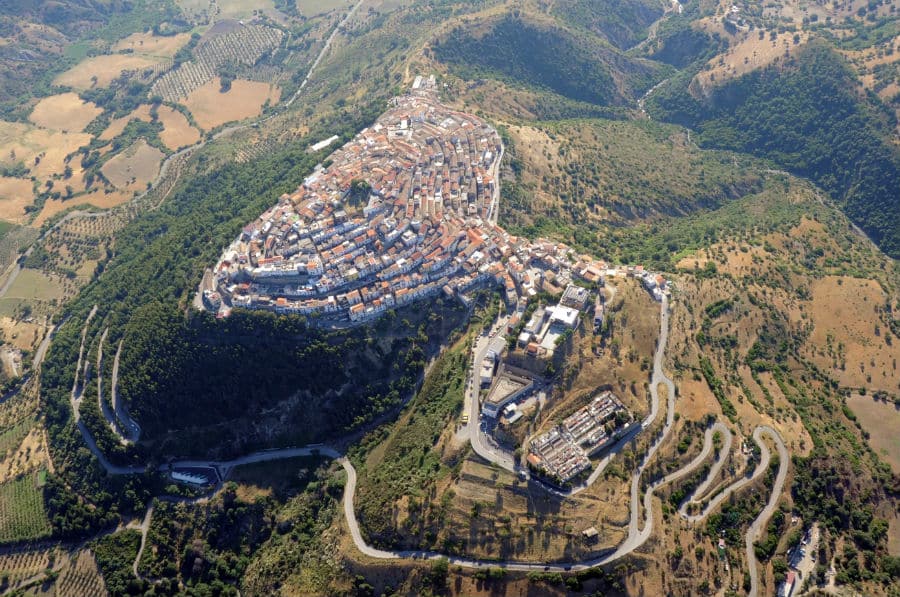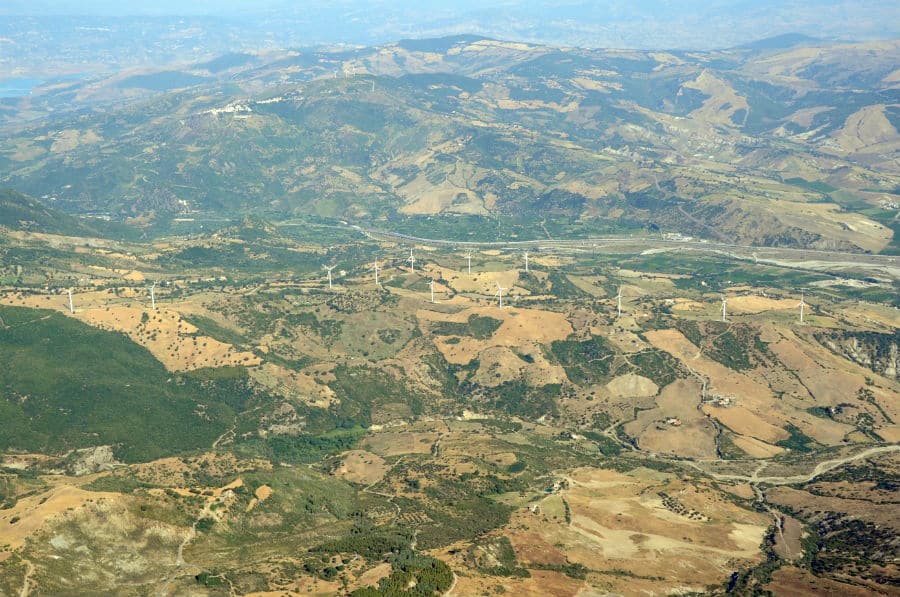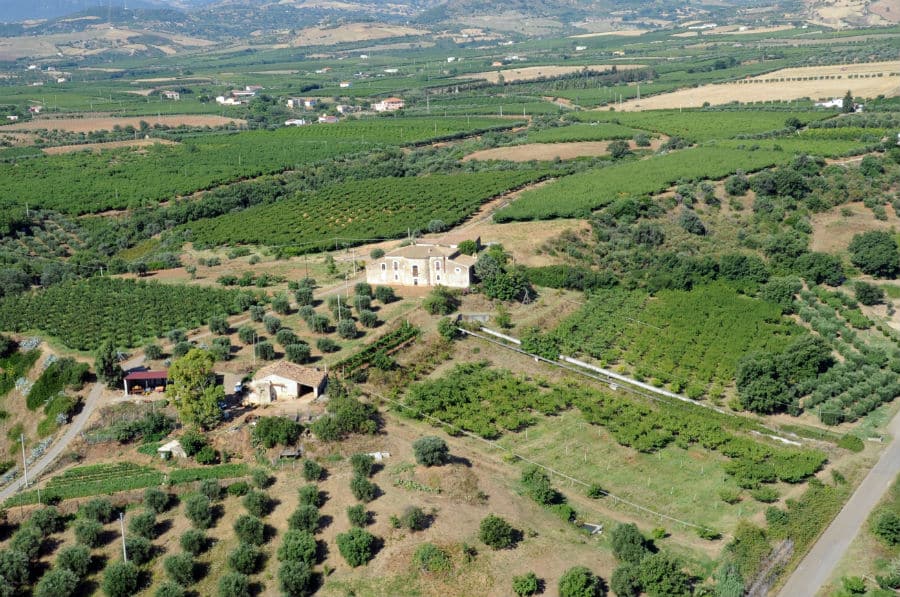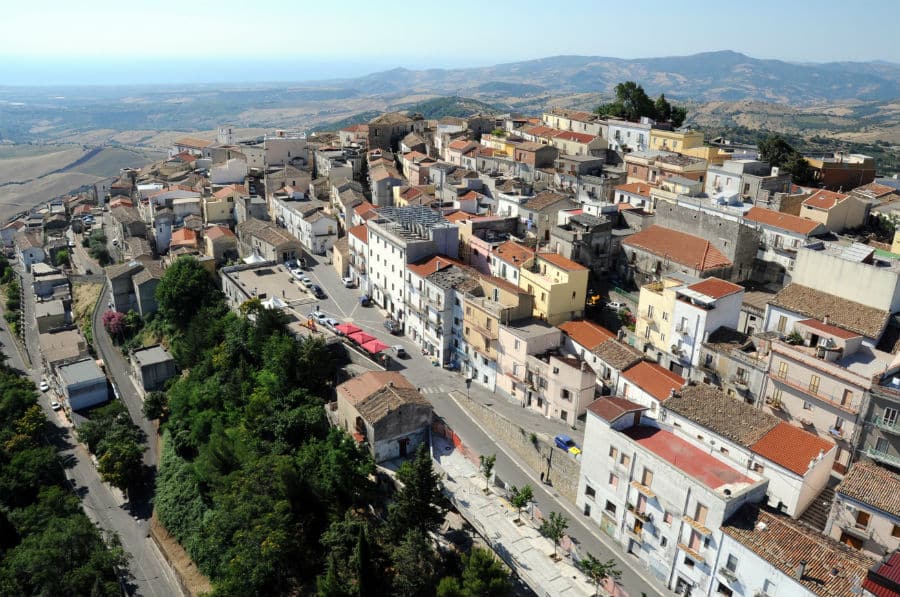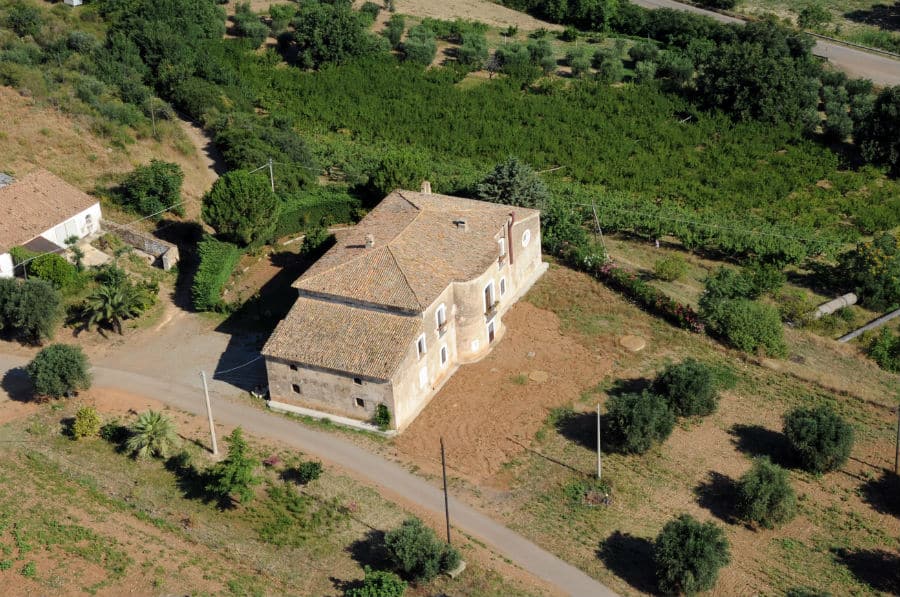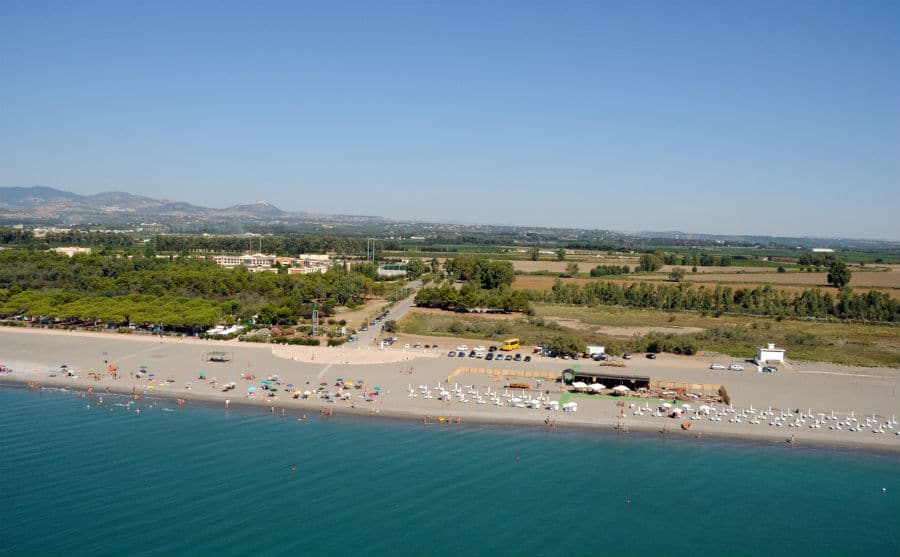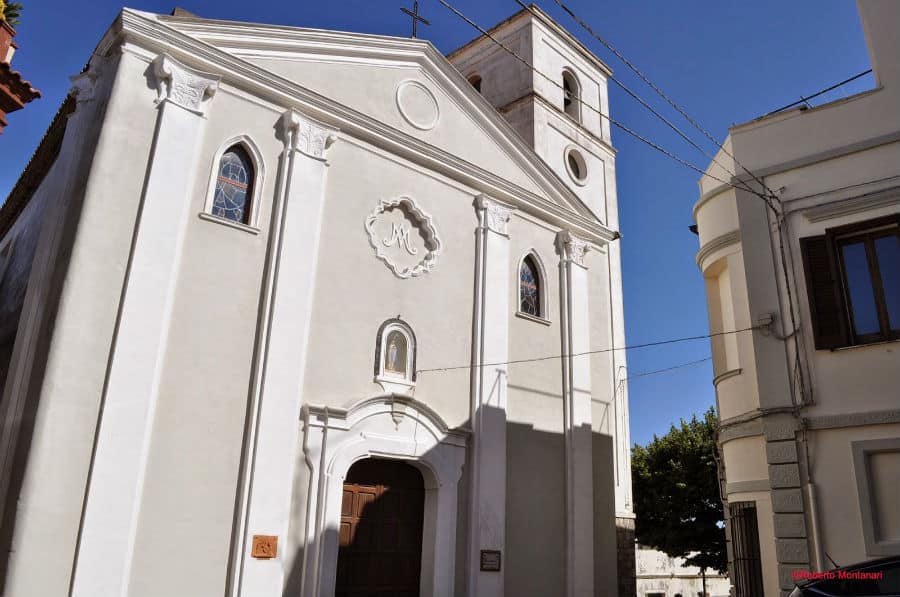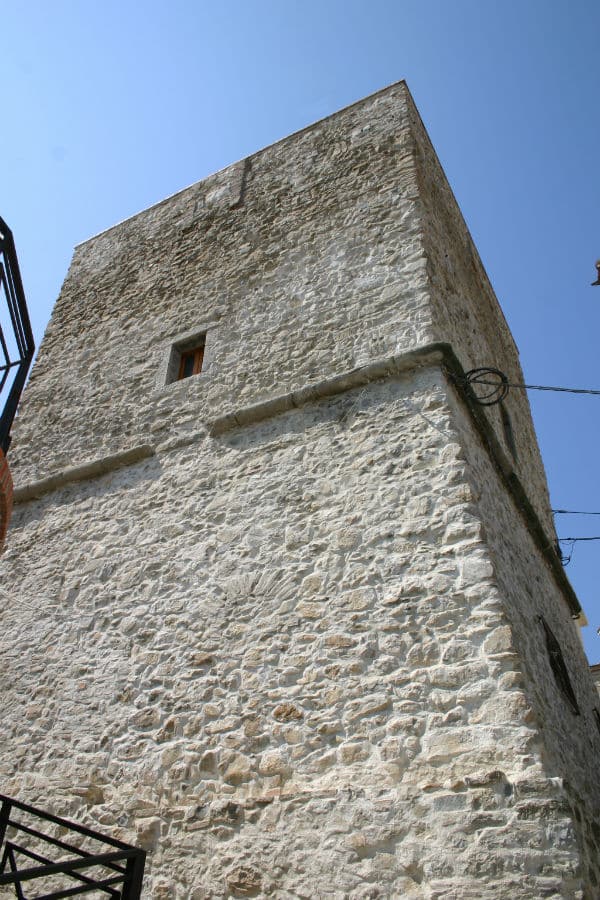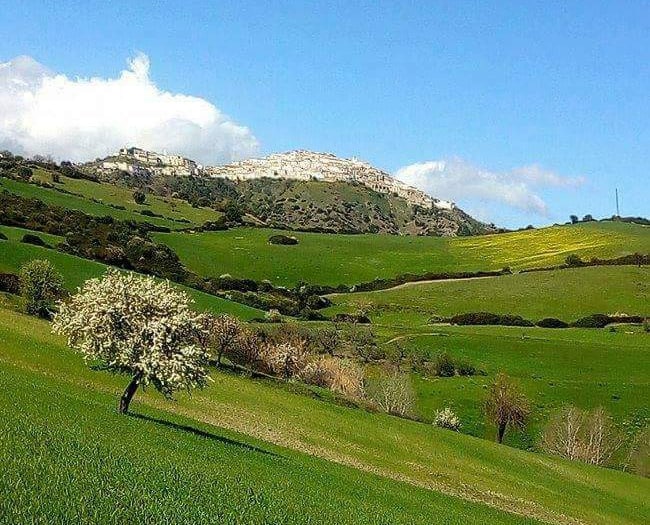The village of Rotondella has very ancient origins. Rotondella is mentioned in 1261 as Rotunda Marinis, a term probably derived from its particular circular shape and position facing the Ionian Sea. In the historic center, the mother church dedicated to Santa Maria delle Grazie and the church of Sant'Antonio da Padova, belonging to the Franciscan convent of the Zoccolanti, are worth a visit.
Strolling through the streets of the village, you can notice the "lamie" of Bitonte, dating back to 1600. Are stone arches at a time, below the tread of the palace of family property Bitonte, from which the name.
The various buildings existing today were built after 1770, when a Rotondella is definitively exceeds the crisis of 1764, the production resumes its normal rhythm and the cultivation of cotton wool becomes very profitable.
In 1772 was built the Palazzo Tucci, the actual palazzo Cospito. The Ielpo palace, built in the early years of the twentieth century, stands where before there was the pharmacy of Benedetta Laguardia, daughter of the apothecary Giambattista and wife of Francesco Antonio Albisinni.
The Palazzo Rondinelli was built at the end of the XVI century by the family Agnesi and is still accessible. In the vicinity there was a defense tower (the so-called Tower of the Prison) equipped with a wooden bridge that linked the two structures in order to avoid the attacks of the Turks.
The Albisinni Palace, built in 1770, is in baroque style with portals and windows in carved stone from chisellers came from Rivello and from Padula. The palace is composed of many rooms are arranged on two floors, in one of them you will find the Chapel of San Gaetano destined for religious ceremonies. Ends with a large terrace from which you can admire the whole Ionian coast.
History
The prehistoric of human frequentation near the valleys of the river Sinni begin to dating already from the Upper Palaeolithic (VIII-VII millennium B.C.). At the end of the II millennium B.C. we must recognize as pre-eminent in the center of the region of the city of Pandosia (today S. Maria d'Anglona), capital of Chaoni, fulcrum of traffics currents between the Apulia and the Bruzio and reference point for the commerce of sea world miceneo. About fifty years after the great Greek colonization achaean of Sibari and Metaponto, from the ionic elements and wind of Asia at the mouth of the homonymous river is founded the new settlement of Siri. The opulence and luxury of Siriti became famous and its river port ensured a safe access to vessels along these coasts void of anchorages, at the center of an immense and fertile plain. This same development was the cause of the end of the city because of the inevitable impact with the near Metaponto and Sibari for commercial competition. The coalition of the nearby cities achee determined the destruction of Siri between 535 and 530 B.C. in the context of the changed historical conditions, toward the 433 a.C., for work of Taranto and Thourioi took place the foundation of Eraclea, little more inside the old Siri, which was to constitute the maritime port.
In 317 BC, after a long offensive, the Romans took possession of the region. Starting from the late imperial age, especially because of the barbarian invasions the region fell in more complete abandonment, accompanied by the impaludamento of rivers, from the extend of swamps and pastures and from the frightening advance of malaria. The domination of the Lombards led to a reorganization of the military zone and the consequent fortification of various strategic sites (VI sec. d.C.). The initial penetration of byzantine not led to a substantial change in the conditions of life, despite the most consistent religious presence of Christian character-east. The progressive clear affirmation of the presence of the Byzantines in the countries of the ancient Lucania led to the formation of many Churches Episcopalian and coincided with a discrete economic recovery and with the expansion of the monastic community of the Greek rite and the Benedictines. Meanwhile, with the decaying of Eraclea, the ancient Pandosia was probably re-emerged as the center of the most eminent of the area and with alternating fortunes and the new name of Anglona, continued to dominate the entire territory also in Norman times (XI-XII century). Almost certainly because of its privileged position that dominates the valley of the Sinni from top of the offshoots of the Timpone of Caprio (576 m) and allows to space with the gaze up to the sea, and perhaps also due to the circular shape of the first settlement, Rotondella was called in ancient times with the toponym of the Rotunda Maris. Still today the country is visually presents as a true roundabout, since the urban layout of the inhabited center follows the trend of the rounded hill according the level curves, drawing the viability in the form of a spiral that starting from the top unfolds along the slopes.
In 1231, Federico II recognized to the Cathedral Church of Anglona possession of the monastery of S. Maria del Lauro "Sita in containment Rotundae Maris". In 1369, Anglona was destroyed by a fire started by soldatesche and Wenceslaus Sanseverino, Count of Tricarico and Chiaromonte riconfermò, to the monastery of Sagittarius The ancient goods and privileges in the Rotunda Maris and Trisaia. Between the end of the sixteenth century and the beginning of the Seventeenth Century the number of inhabitants of Rotondella finally became satisfactory. For this reason, in 1580 was elevated to the new parish church of S. Maria delle Grazie (then of reduced dimensions compared to the current form), which was opened to worship in 1587. Toward the end of the century, the Turks invaded again the region including Rotondella, and took about two hundred prisoners of whom do not had more news.
The University (or "common") of Rotondella was born in 1604 and legally became the owner of the area of the ancient defense, although the Barons Agnes could continue to demand of credits on their old possession. Already from the first half of the Seventeenth Century, by will of the Doria, new activities were undertaken by those who dwelt in the hamlet of S. Laura, to whom was the merit of having plowed the neighboring land and of having put to crops the lands. From 1680 the population began to grow in large numbers. The events of the first decade of the Nineteenth Century, that so much marked the destiny of the Kingdom of Naples, of course did feel further consequences also on the inhabited center of Rotondella that suffered because of its geographical position, since the forest of Policoro offered a good retreat to the robbers, either in isolation or in a group. The night of 30 August 1807 is sadly remembered for having been a witness of looting, rape and violence of any kind on the part of the band of don Nicola loaf of bread that made irruption in the country.
The eversiva law of feudalism issued on 2 August 1806 declared abolished the feudalism, for which all jurisdictions baronial passed to the State and were abolished personal performance that the holders of the feuds perceived in any way by the people and by individual citizens. After 1811, brigandage was defeated by the ruthless action of General Carlo Antonio Manhés, whose measures engraved not just on the economic life of Rotondella, that for about a year was uninhabitable and almost deserted. On 13 July 1820, following the popular movement, Ferdinando I granted the Constitution and Rotondella became a place of fierce political struggle, which culminated in the siege at Palazzo Albisinni on 26 September of the same year. In addition to the sect of Calderari, in the years 1816-17 also the Carbonarist movement found many followers in Rotondella and are the children of these characters to represent a novelty: born in French decade and in the first restoration, will grow with a new mentality, a greater cultural preparation and increased attention to the political problems. In fact, will be the heroes of the events of 1848 precisely those who had attended the University Studies in Naples. When, on 29 January 1848, Ferdinando II proclaimed the new Constitution there was great excitement among the Liberals, who found a guide and an incitement to Girolamo Fauchier, judge the Regio Rotondella in that year. It assisted, thus, to the growth of a new political awareness, no longer tied to particular interests but more aimed at collective. In the country turned out to be a considerable number of students enrolled at Giovane Italia and other movements and sects of various inspiration.


